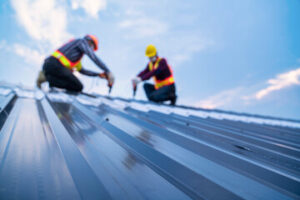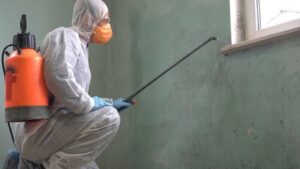Energy efficiency is an important concern for homeowners in many parts of the country. Choosing a roofing material with high thermal emittance can help to lower energy costs.
Metal Roofing Missoula is much harder and less prone to damage from large hail, like pea-sized or dime-sized hail, that can ruin asphalt shingle roofs.

Durability
Metal roofs offer a long lifespan, minimal maintenance and energy efficiency. Available in a variety of materials, styles and colors, these roofs can be fitted to suit all housing and commercial architectural types. They can be shaped and coated to mimic the look of traditional shingles, slate, clay tiles or shakes. They are available in whole-panel, single shingle-like designs and can be installed on new construction or over an existing shingle roof. Most metal roofs are made from galvanized, aluminum or copper and can be purchased in a wide range of finishes. They are fire resistant, rust and corrosion proof and are designed to withstand high winds and seasonal weather conditions.
A Metal Roof Saves Energy
Unlike shingles, which absorb and hold the sun’s heat during its daylight hours, a metal roof acts like a giant mirror reflecting it up into the atmosphere. This significantly decreases the building’s thermal load, and lowers air conditioning costs. This is especially true in areas of the country that experience extreme summer temperatures, where a metal roof can decrease cooling bills by 10-25%.
A metal roof’s reflective solar coating is also good for minimizing heat buildup in attics. This allows insulation and venting to work better, and keeps the attic area cooler and more comfortable. It is important to note that the amount of energy a roof reflects or absorbs will depend on the type, color and finish of the roofing material.
Another benefit of a metal roof is that it does not take as long to install as a shingle roof, and can sometimes be installed over an existing one. It is important to use a roof contractor that specializes in this type of roofing, as improper installation can result in leaks and premature wear and tear.
A properly installed and maintained metal roof is extremely durable and can last for as long as 100 years, saving homeowners from the expense of frequent shingle replacements. It is also environmentally friendly, with most of these roofs having between 25-95% recycled content and being 100% recyclable at the end of their life cycle.
Energy Efficiency
Since the earliest days, corrugated tin has been used for chicken coops, barns and sheds, industrial and factory out buildings and even makeshift homes. It is inexpensive, long-lasting, and provides ample protection from the elements. Today, it’s used for everything from upscale home remodeling to commercial and residential construction. Many homeowners are ditching their shingle roofs in favor of metal.
One of the most attractive benefits of a metal roof is that it’s more energy efficient than other roofing materials. It reflects the sun’s UV rays rather than absorbing them, which keeps temperatures in the attic and the rest of the building much cooler during the summer. This results in lower air conditioning costs and a more comfortable home.
The reflectivity of a metal roof is enhanced by its coating, which can be either granular or shiny. The color of the roof also has an impact on its ability to reflect the sun’s rays, with darker colors having less energy efficiency than lighter ones. The good news is that many metal roofing manufacturers offer a wide variety of finishes, from classic black to bright white, so you can choose the best option for your home’s exterior.
A metal roof also helps to keep heat inside during the winter. While it isn’t as insulating as other roofing materials, it can be easily paired with effective insulation for added energy savings.
Unlike shingles, which are prone to mildew and fungus, metal roofs don’t require the harsh chemical treatments that shingle roofing often requires. Additionally, a well-installed metal roof can last up to 60 years.
The longevity and durability of metal roofing make it a more eco-friendly choice than most other roofing options. In addition, metal roofing can be recycled at the end of its long life. This is in contrast to the 20 billion pounds of shingle waste that ends up in landfills each year. Metal roofing is also fire resistant, which can be very important for those living in areas prone to wildfires. This can help save a home and property from destruction during these tragic events.
Weather Resistance
Metal roofing is a great choice for homeowners and building owners in warmer climates because it helps to conserve energy. Many of us have grown up with the soothing sounds of rain on corrugated tin roofs in barns, sheds and makeshift housing, but that’s not the only reason for the growing popularity of this style of roofing. Metal roofs are very durable and offer superior protection against extreme weather conditions, making them an excellent choice for homeowners in tropical regions.
A metal roof will reflect a significant amount of solar energy, which will help to lower the indoor temperature. This will allow you to keep your air conditioner running longer and minimize your energy costs. For even greater efficiency, consider adding a radiant barrier underlayment to your new metal roof. This technology works much like high-performance tires for your car by reflecting the sun’s rays before they reach your home or business.
Unlike asphalt shingles, metal roofs are also highly efficient at cooling and insulating a space. This means that you can save a lot of money on your heating and cooling bills throughout the summer. You will also be helping to reduce the carbon footprint of your building or home, contributing to a global movement towards more sustainable practices.
One of the most appealing benefits of a metal roof is that it can be used in a wide range of styles and colors to match any aesthetic. This allows you to add a sense of style and beauty that will elevate the look of your property and bring a whole new level of curb appeal to your home or building.
The durability and energy efficiency of metal roofs make them an excellent choice for both new construction and replacement projects. This type of roof will last a long time with very little maintenance and repairs, saving you a lot of money in the long run.
In addition, metal is an environmentally friendly material that is often made with recycled materials and can be easily recycled at the end of its lifecycle. This is a significant improvement over asphalt shingle roofs, which can contain dangerous chemicals such as arsenic and polycyclic aromatic hydrocarbons at levels that are harmful to the environment.
Maintenance
Metal roofs can change the look, energy efficiency and lifespan of a home or commercial building. They also save a lot of money in the long run over traditional shingle roofs. They are an environmentally friendly option and can be recycled after their long lifespan. This helps to reduce building waste, lower carbon emissions and decrease landfill space.
However, like all roofing systems, metal roofs require maintenance to ensure the best performance and longevity. Regular inspections can help to identify problems before they become worse. These inspections can include checking for clogged drains and gutters, leaking panels or flashing material that has degraded.
Keeping debris, leaves, and residue off of a roof can prevent moisture damage and the growth of mold or mildew. Similarly, a clean roof will maintain energy efficiency, as air will not be able to escape the building through cracks or weakened areas in the roofing.
When a home or commercial building owner has a well-maintained metal roof, it shows that the property is well-cared for and can be expected to have good upkeep for any potential buyers. This can increase the value of a home or office, and may make it easier to sell in the future.
In addition to general maintenance, it is important to check on the condition of the metal roof after severe weather. This includes checking for paint scratching, flaking or fading, as well as signs of corrosion in the penetration points (like flues, vents, chimneys, skylights and solar panels). This is especially important in sunny climates, where the sun’s UV rays can quickly cause rubber materials to degrade.
Inspecting a metal roof isn’t something that can be done on your own, and it is usually best to have a professional roofing contractor perform the maintenance. They can inspect the roof for any leaks or areas of possible damage, as well as checking the metal panels themselves to see if they are separating at the seams. If this occurs, it can lead to water damage and rust underneath the metal. This can be spotted by looking for dark areas under the eaves or near penetration points on the roof.

